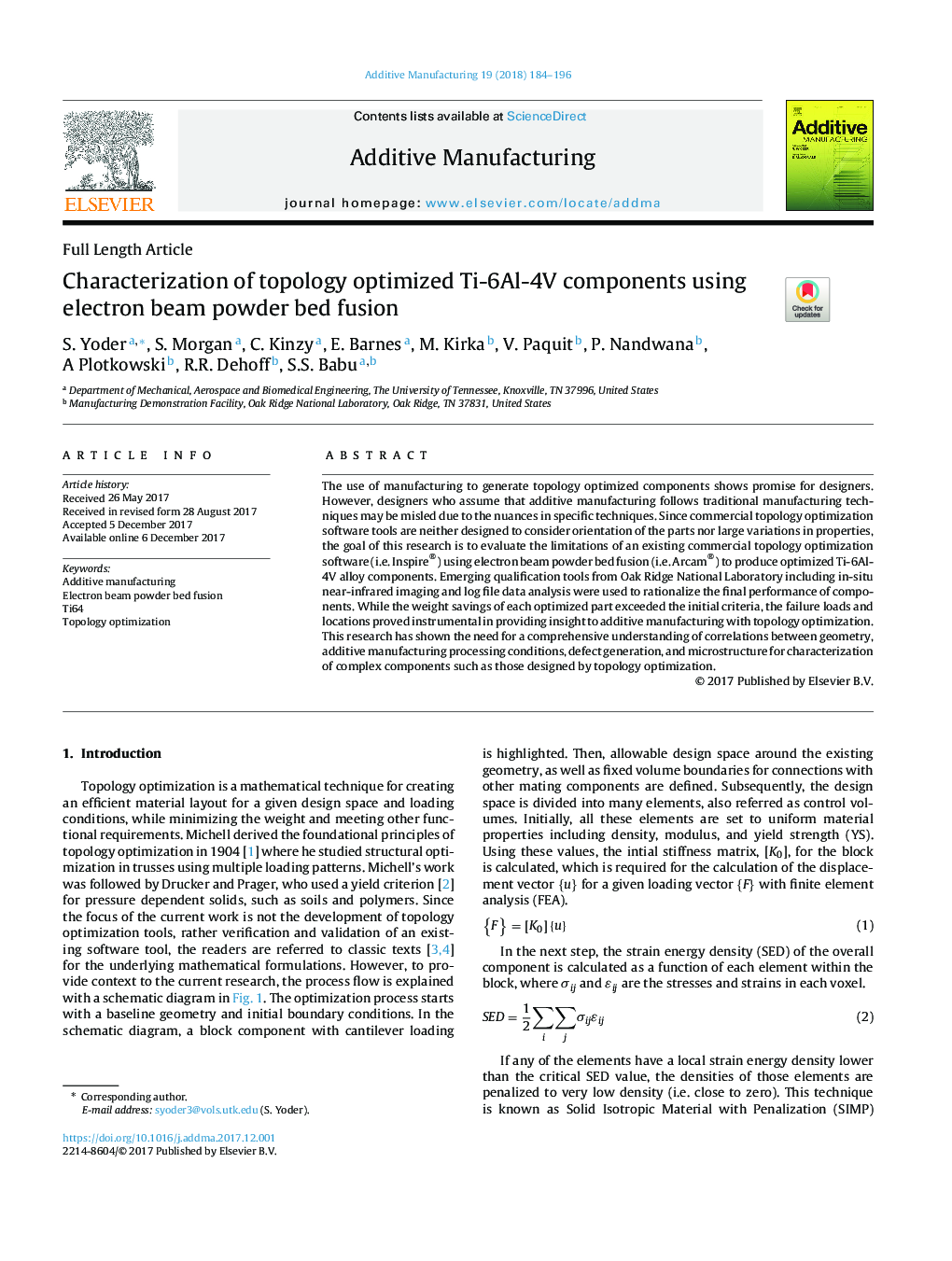| Article ID | Journal | Published Year | Pages | File Type |
|---|---|---|---|---|
| 7205988 | Additive Manufacturing | 2018 | 13 Pages |
Abstract
The use of manufacturing to generate topology optimized components shows promise for designers. However, designers who assume that additive manufacturing follows traditional manufacturing techniques may be misled due to the nuances in specific techniques. Since commercial topology optimization software tools are neither designed to consider orientation of the parts nor large variations in properties, the goal of this research is to evaluate the limitations of an existing commercial topology optimization software (i.e. Inspire®) using electron beam powder bed fusion (i.e. Arcam®) to produce optimized Ti-6Al-4V alloy components. Emerging qualification tools from Oak Ridge National Laboratory including in-situ near-infrared imaging and log file data analysis were used to rationalize the final performance of components. While the weight savings of each optimized part exceeded the initial criteria, the failure loads and locations proved instrumental in providing insight to additive manufacturing with topology optimization. This research has shown the need for a comprehensive understanding of correlations between geometry, additive manufacturing processing conditions, defect generation, and microstructure for characterization of complex components such as those designed by topology optimization.
Related Topics
Physical Sciences and Engineering
Engineering
Industrial and Manufacturing Engineering
Authors
S. Yoder, S. Morgan, C. Kinzy, E. Barnes, M. Kirka, V. Paquit, P. Nandwana, A Plotkowski, R.R. Dehoff, S.S. Babu,
